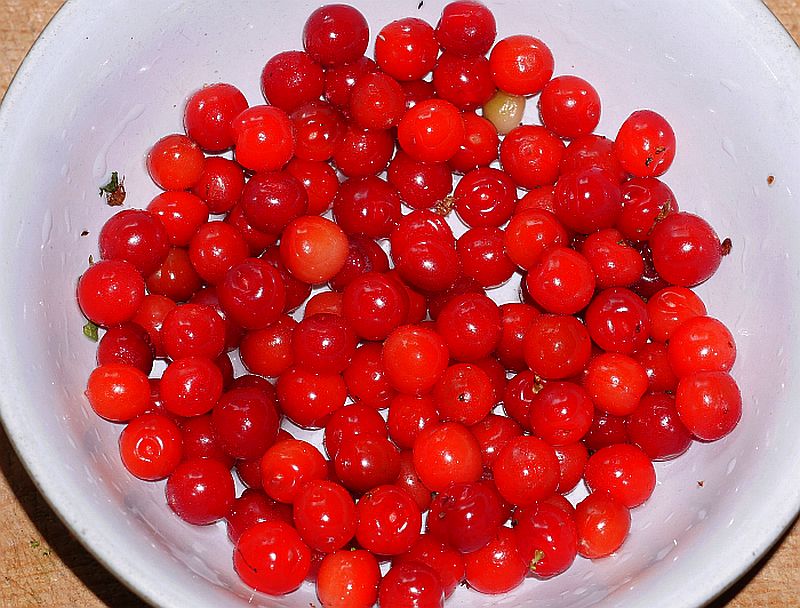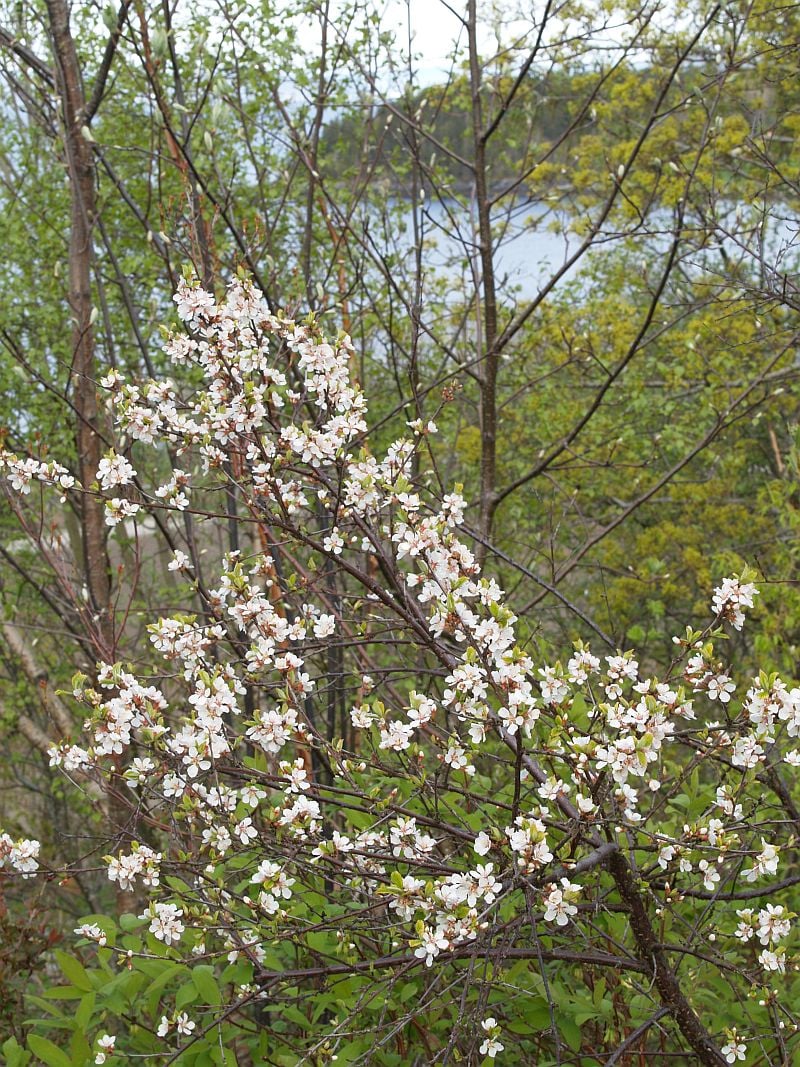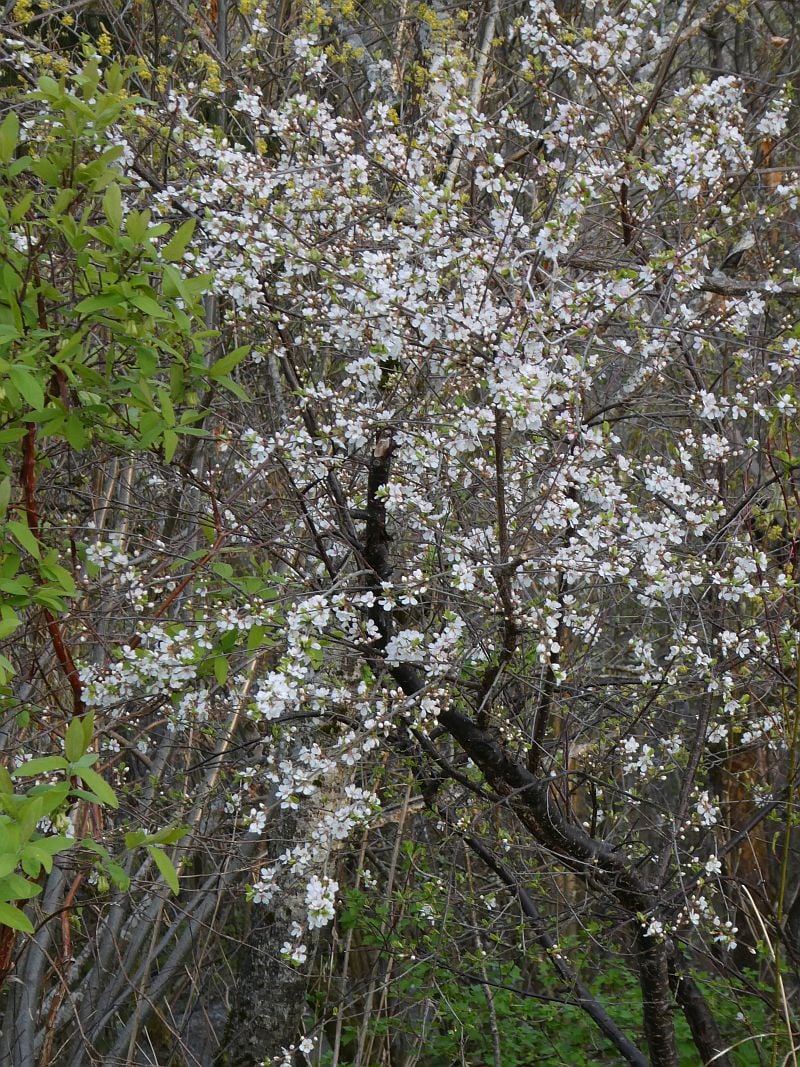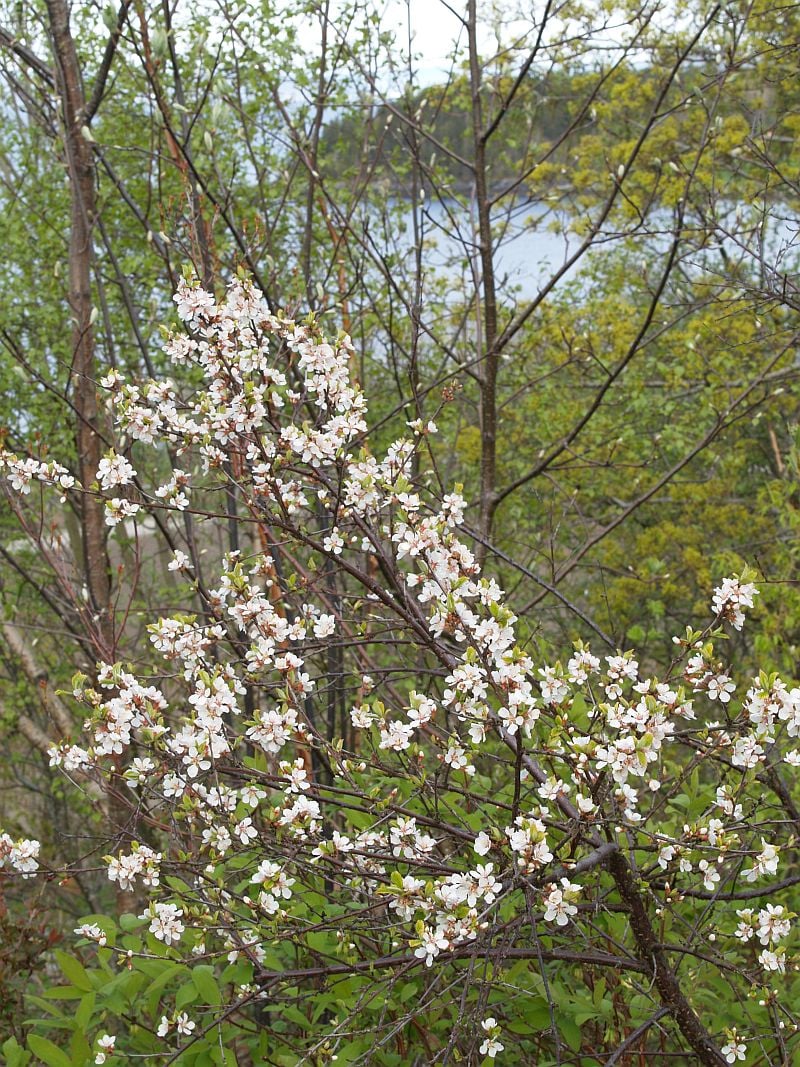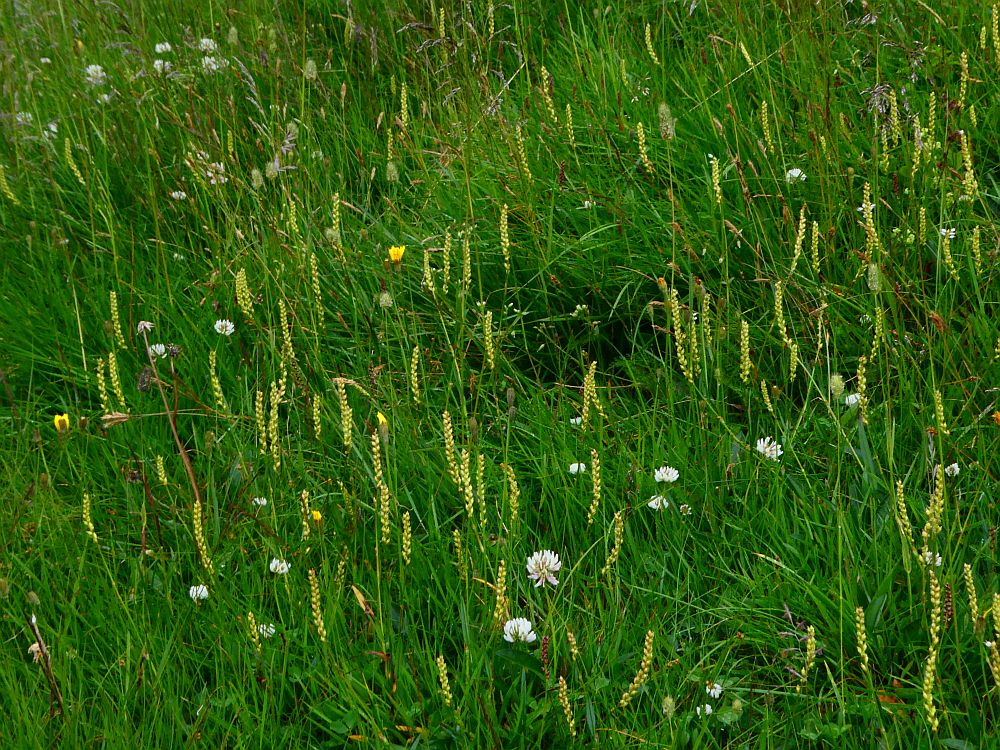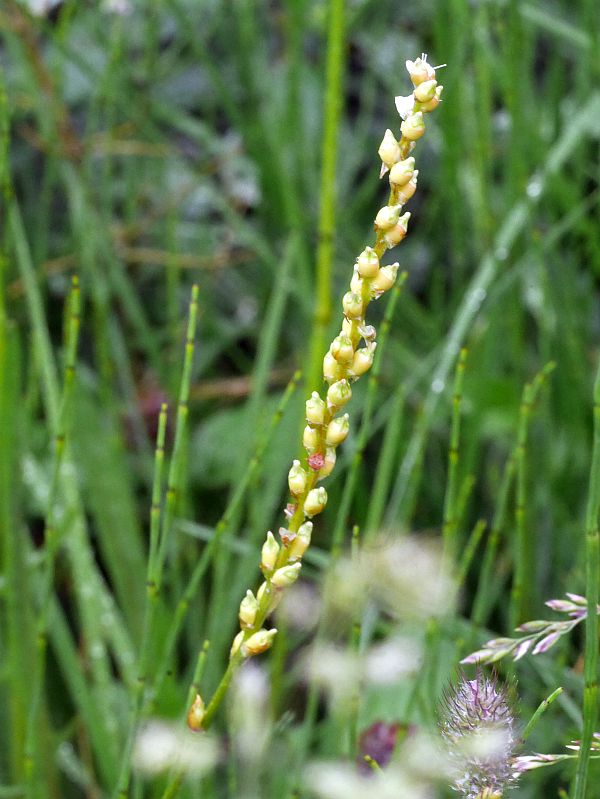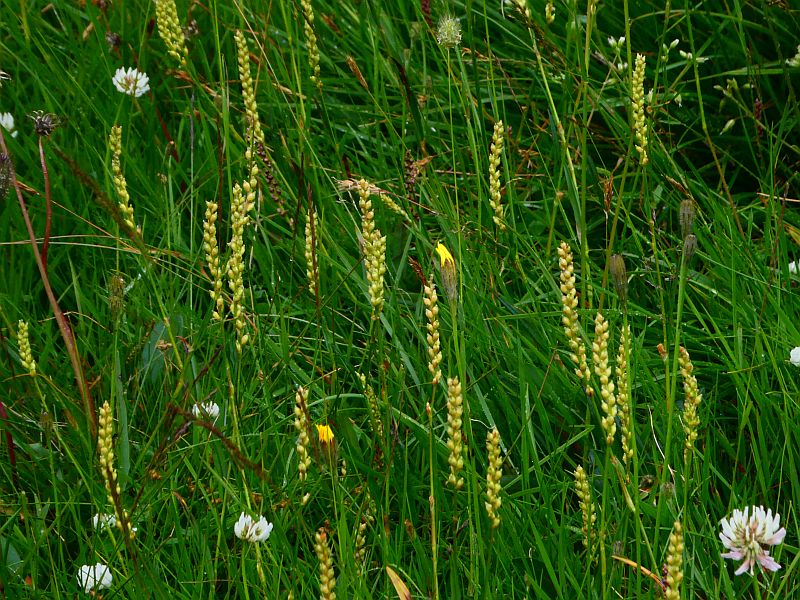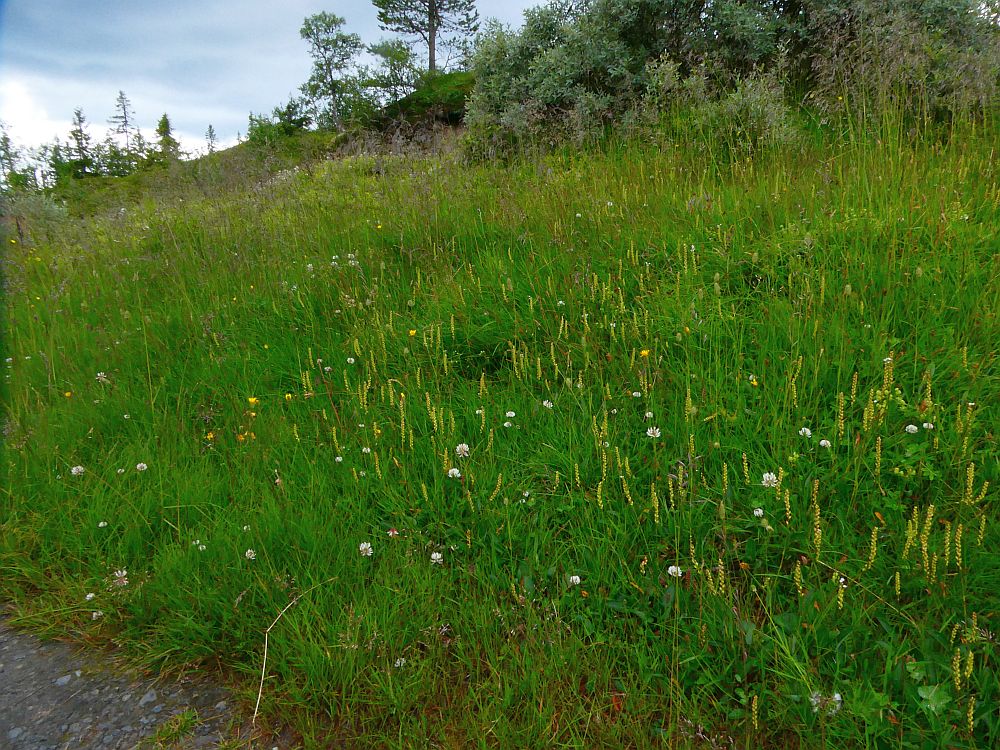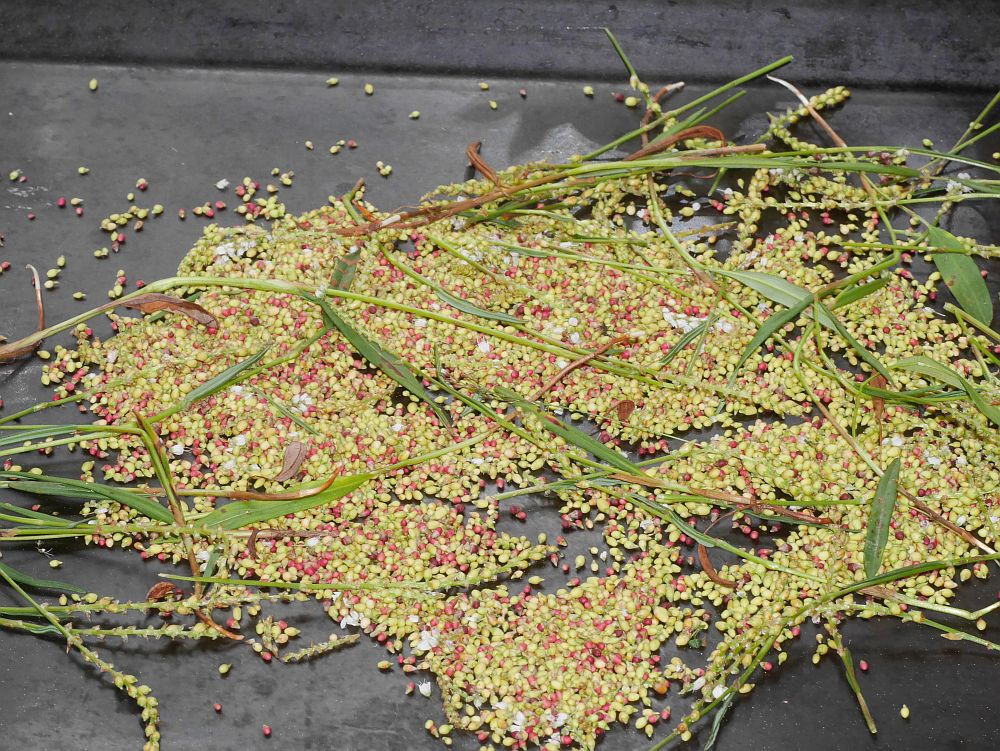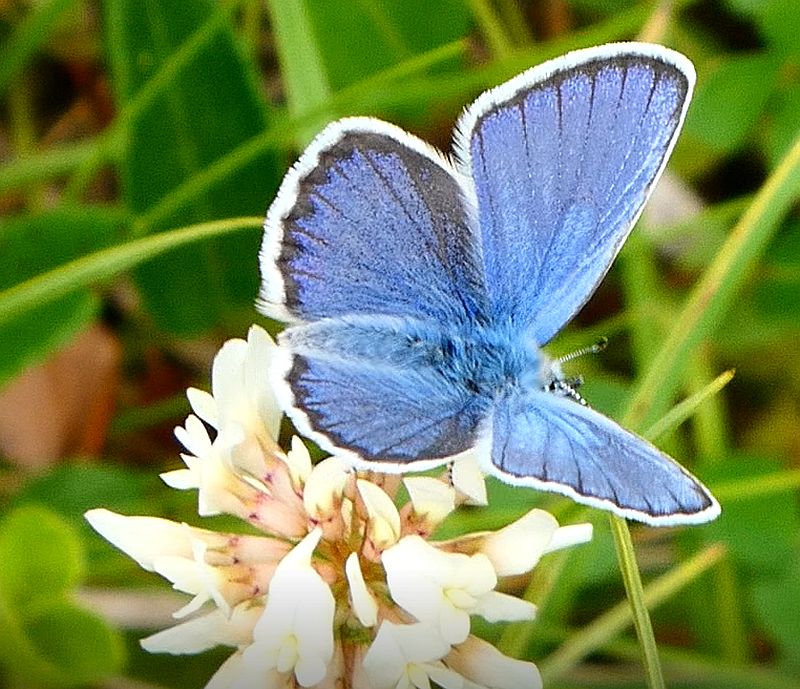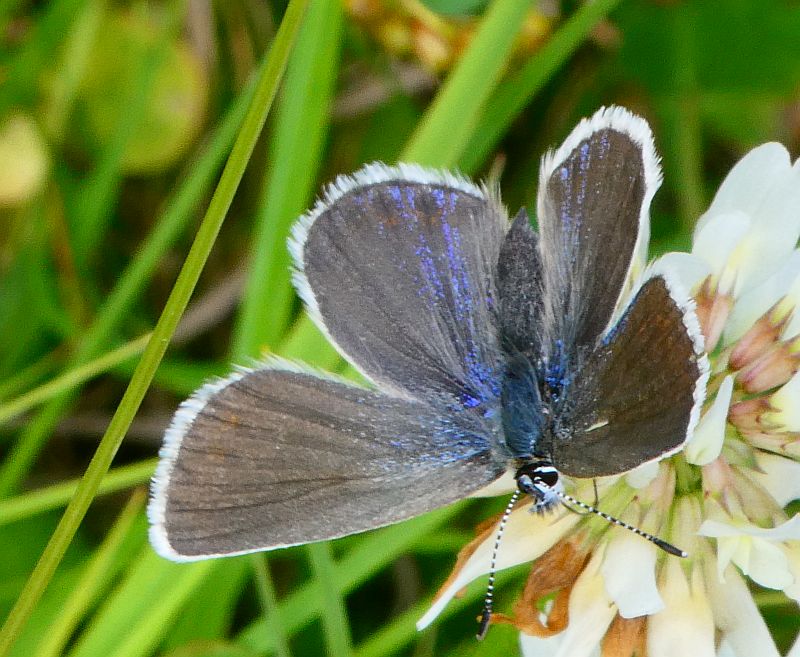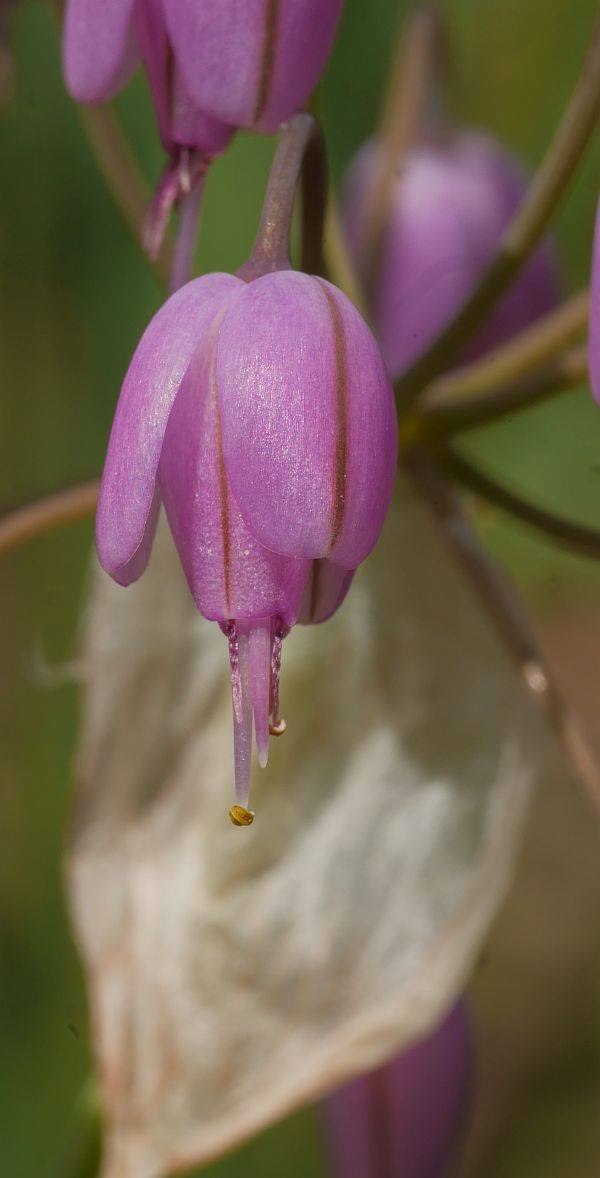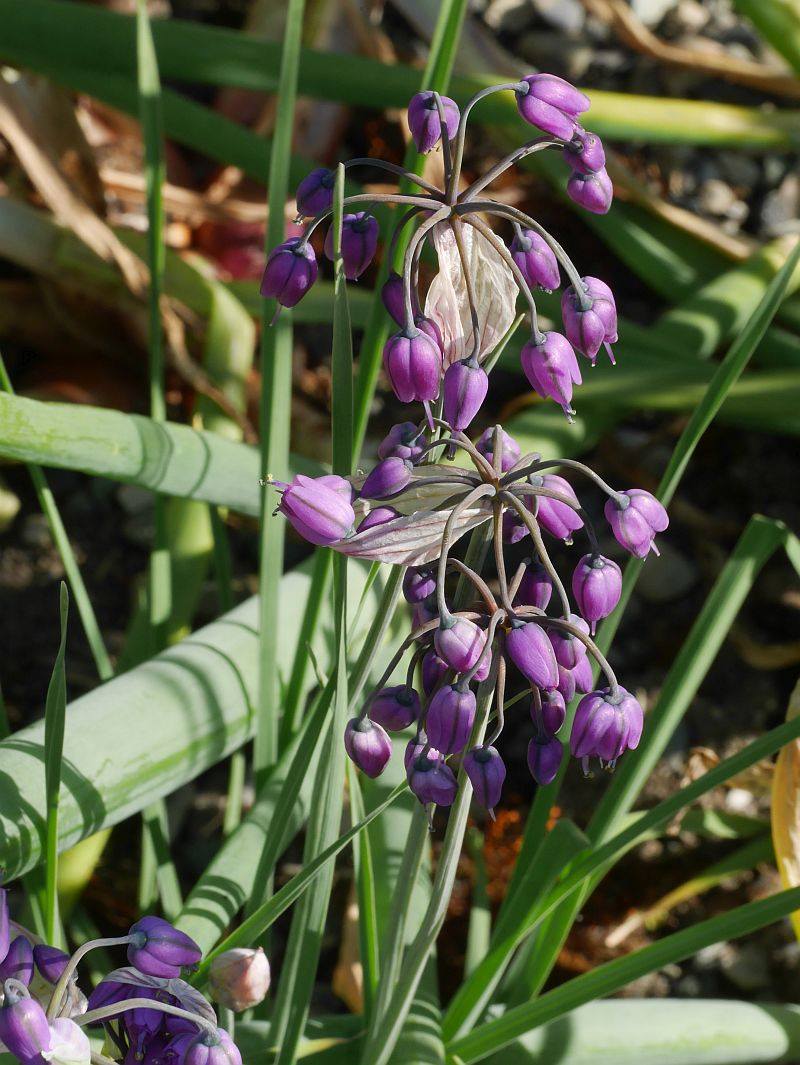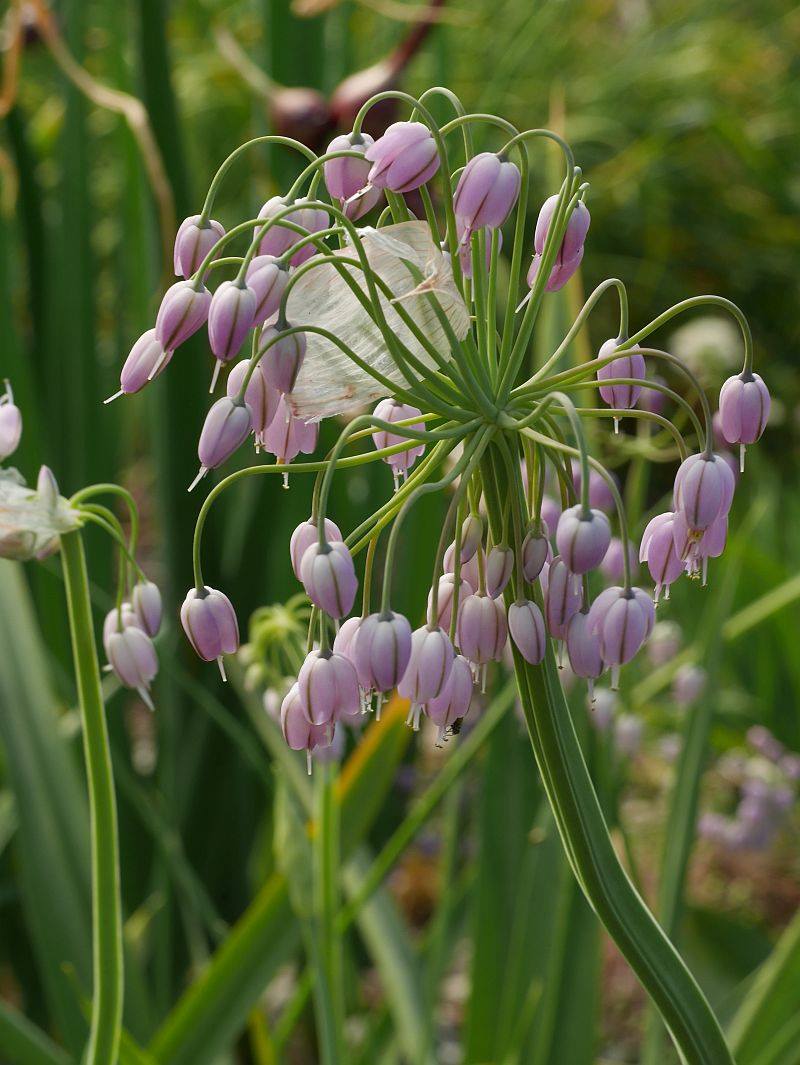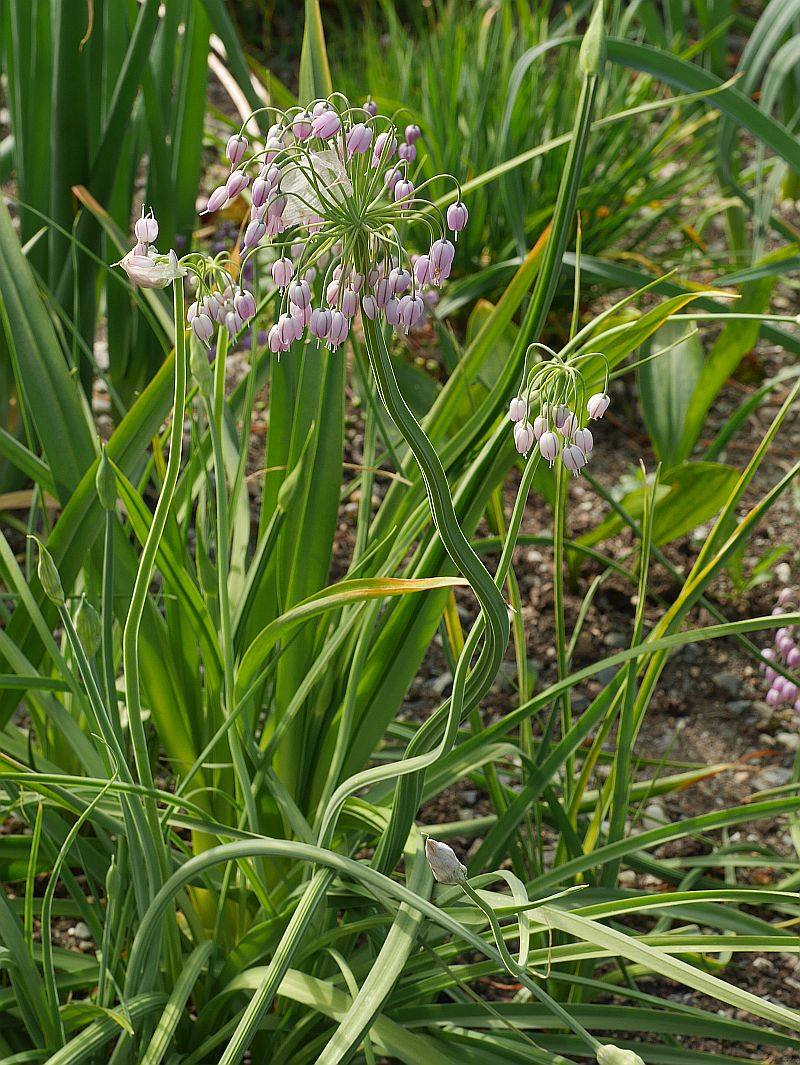The first painted lady (tistelsommerfugl) of the year in the garden (2 years since the last one during the 2019 invasion year). On teasle / kardeborre (Dipsacus).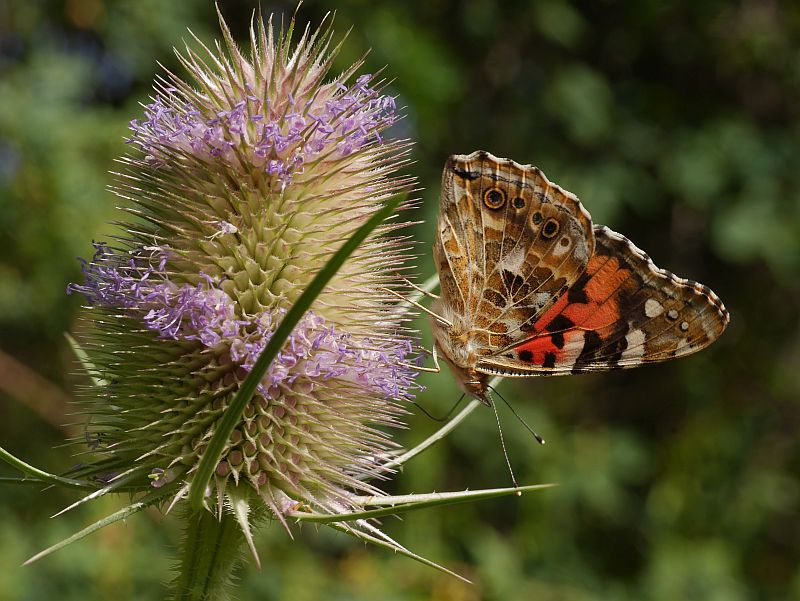
Monthly Archives: July 2021
Dystaenia heaven
Along with many members of the Apiaceae (carrot family / umbellifers) the flowers of Dystaenia takesimana (Giant Ulleung Celery) are heaven for pollinators like hoverflies (blomsterfluer).
These great edi-ento-mentals thrive both in sunny conditions and in the complete shade of this Buddleja davidii (butterfly bush / sommerfuglbusk).
For more on this great multi-purpose plant, see https://www.edimentals.com/blog/?p=24998
Nanking cherry harvest
They are also fantastic when blossoming (and full of fruit), so a valuable edimental in any case!
And, yes I do save the seeds for sharing with Norwegian Seed Savers (kvann.no).
The 2021 Selfies with a 20-year old Udo
This year’s udo (Aralia cordata) selfie pictures, probably the highest ever with a flowering spike way above my head. I harvested about 1/3 of the shoots in the spring. This is my largest herbaceous perennial vegetable that was planted here 20 years old ago! It has never had any fertiliser and is growing on the steepest slope in my garden. Ostrich fern (strutseving) and giant bellflower (storklokke) can be seen in the foreground.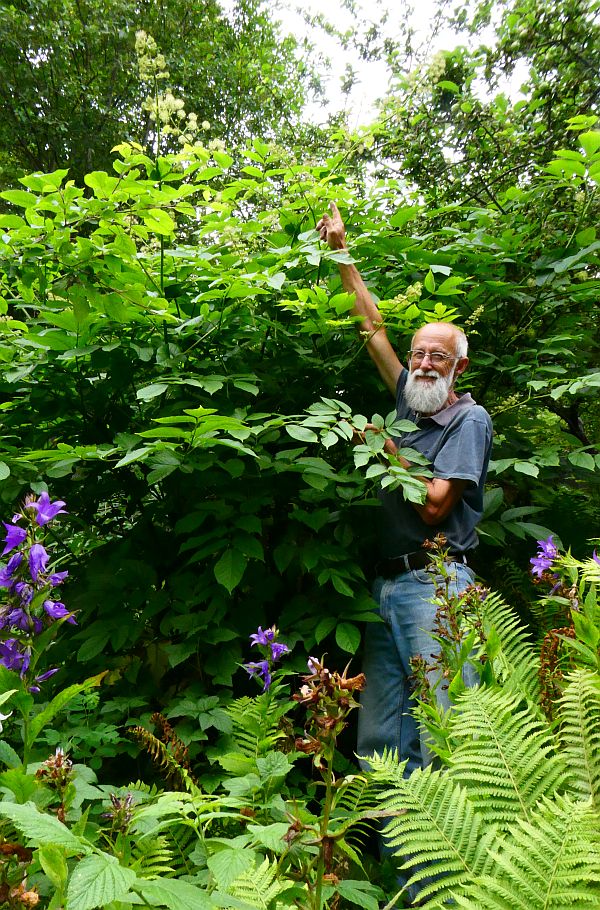
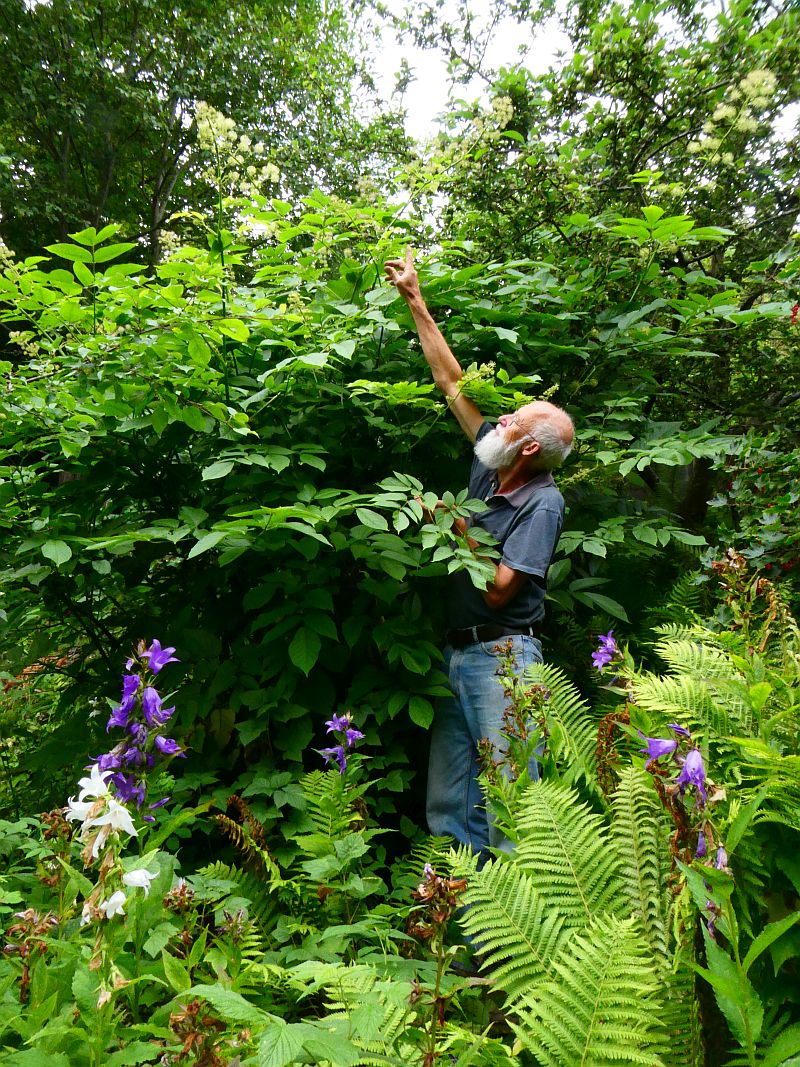
Temnostoma vespiforme
Over the last couple of years I’ve been trying to document as much as possible of the incredible diversity of insects and spiders that are living in The Edible Garden. For many years I’ve noted and reported the birds I see in the garden. COVID gave me the opportunity finally to have time to look at the other life forms that I live with and it’s been quite a journey. I have a separate blog post on the moths (approaching 170 species) and I often post pictures of various pollinators on my edible plants (notably bees, beetles, wasps and hoverflies); edible plants that attract pollinators I term edi-ento-mentals (the most valuable plants are those that both provide food for me and the pollinators, and are also good to look).
I initially thought that the latest hoverfly to be documented was a large wasp, but it turns out to be Temnostoma vespiforme (Ginger or wasp-like tigerfly / vepsetreblomsterflue). It was feeding on Heracleum sphondylium (common hogweed / bjørnekjeks). The first record for Malvik kommune and only scattered finds before in this area. Larva of this species feed in decaying wood of deciduous trees.
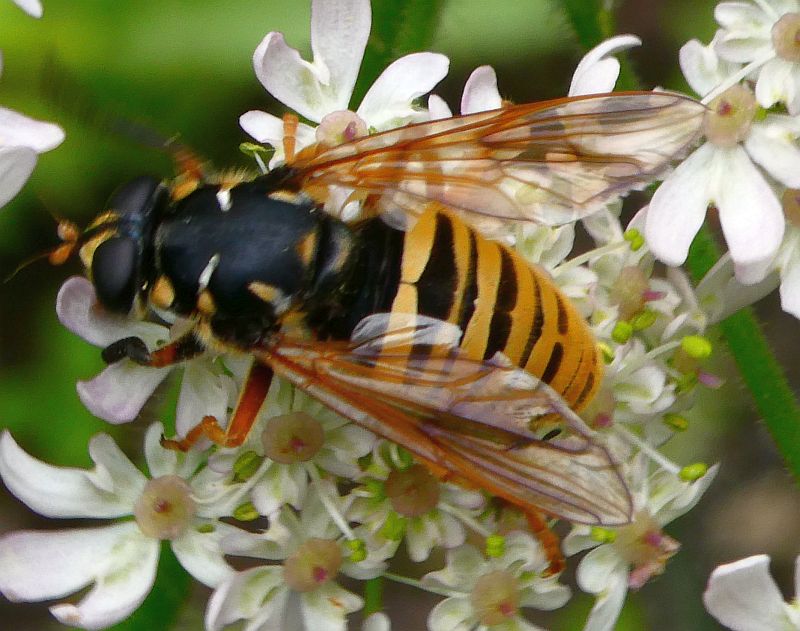
Alpine bistort harvest and the Idas Blue
More or less the only plant I forage these days from the wild are alpine bistort (harerug) bulbils (Polygonum viviparum / Persicaria vivipara) to dry for the winter. This is one of the 80 plants in my book and I grow various accessions of this plant also in my garden! See also my post on 25th June 2019: http://www.edimentals.com/blog/?p=22680
The best places for this species are in the high mountains and this plant’s tubers saved many mountain folk in the past from dying of hunger. We were at about the tree line and here it’s only found on disturbed ground but in places there can be large numbers of plants as in the video. It was a little early still, so we didn’t pick a lot, but will return in a couple of weeks. As we worked, hundreds of Idas blue / Idasblåvinge butterflies flitted around us!
No shortage of bumblebees
Several species of bumblebee were queuing up for a turn on the Allium pskemense x cepa hybrid in the garden this afternoon:
Edimentals Goes Mainstream
On the 12th June, I gave my first webinar at a mainstream gardening conference in the US, the Southeastern Plant Symposium, hosted by the JC Raulston Arboretum and Juniper Level Botanic Garden in Raleigh, North Carolina. I had thought that the invitation was on the back of a successful talk I gave at the Atlanta Botanical Gardens in September 2019. However, it turned out not to be the case and one of the organizers horticulturist and owner of Plant Delights Nursery, Tony Avent, had read my book, enjoyed it and had suggested to the committee to invite me!
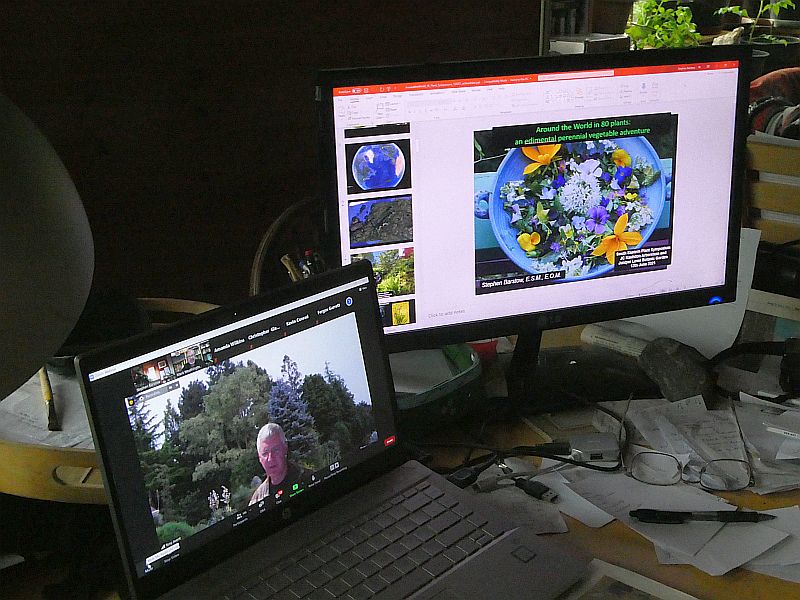
I was sandwiched between some great ornamental gardeners and plant breeders including Fergus Garrett of Great Dixter in the UK. I particularly enjoyed Aaron Floden’s talk (from the Missouri Botanical Garden) on unexploited native plants (in an ornamental context) and plant breeder Peter Zale’s talk on Hosta breeding (the market for Hostas in the US is enormous….time for a small segment dedicated to Hostas for food!). Edimental gardeners can, as I have over the years, get a lot of inspiration from ornamental gardeners.
The feedback after the event was very positive. One of the participants, Marty Finkel, wrote an article about the talk which has just been published on page 10 of the Granville Gardeners Gazette (available for all to read!)
see http://www.thegranvillegardeners.org/wp-content/uploads/2021/07/Gazette-2021-07.pdf (after an article about human composting!)
Chiugok, Small Bird’s Garlic, a hardy Himalayan edimental
Like Sherpa onion or Nepalese onion Allium wallichii, which features in my book Around the World in 80 plants, chiugok (small bird’s garlic) as Allium macrantum is known in Lithang, Tibet is the latest emerging Alliums in my garden. I often wonder if they are still alive when, in a cold spring they haven’t emerged by the end of May, but both species have overwintered now for almost 20 years.

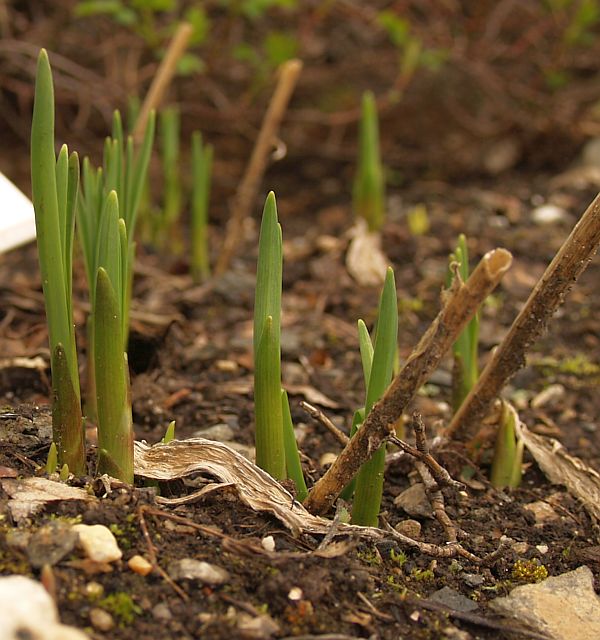
I’m not sure where my oldest plants came from but my second accession came from Vojtec Holubec’s seedlist, collected in Szechuan in China. It’s native to Bhutan, Sikkim, Gansu, Shaanxi, as well as Szechuan and Tibet and grows in wet places at elevations of 2700–4200 metres (Flora of China).
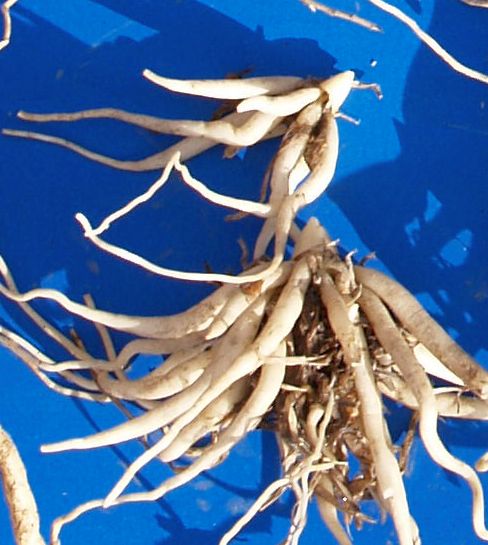
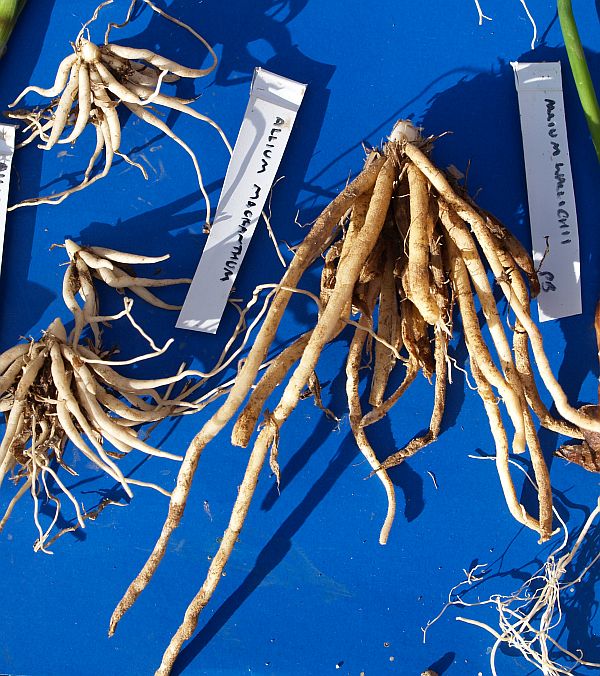
By early July the old roots are withering away and new roots are growing as the flower scape appears:

The flowers are gorgeous hanging on long pedicels. Note that the flower colour varies and the Szechuan accession is pink with green pedicels and has relatively many flowers.
One of my multi-species salads with Allium macranthum flowers in the centre:
Seed heads on 6th September:
Seeds ready to share or trade:
Ethnobotanical records
I searched Google Scholar for evidence of Allium macrantum being used traditionally for food and there were indeed a few ethnobotanical studies recording its use as a food plant. Although not the most popular food Allium in the Himalayas, it is reported to have been one of several species eaten both in Arunachal Pradesh in North East India, the Eastern Hills of India (along with more commonly used Allium wallichii, Allium hookeri and Allium fasciculatum) and used as a spice with meat in South Central Tibet. In Lithang, chiugok “is cleaned and cut into small pieces. It is mixed with butter, tea, roasted barley flour (tsampa), salt, and chilly. Tsampa may not be added. The sauce so obtained is eaten with Tibetan dumplings (mokmok) and fried meat-filled pancakes (shapakle)” (in Traditional knowledge of wild food plants in a few Tibetan communities).
The taste is in my experience relatively strong and therefore best in mixed salads and cooked dishes.
Allium macranthum has also been moved into gardens as an ornamental and has also been used medicinally, including, along with other Allium species, as a cure for altitude sickness!
There’s always one: blue tit taking a shower!
It was close to 30C and I was working outside this afternoon and decided that my saskatoons (Amelanchier) could do with a bit of water. The hose was on at the base of the trees and one of this year’s blue tits (blåmeis), which had fledged a couple of weeks ago, decided it would be great to cool off with a cold shower, probably it’s first!

